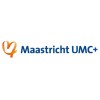
Shamrock Versus Lumbar Ultrasound Trident - Ultrasound Guided Block of the Lumbar Plexus
Hip FracturesAnesthesia Local2 moreThe main objective of the trial is to complete a double-blinded randomized controlled trial of a lumbar plexus block with the Shamrock technique versus the Lumbar Ultrasound Trident technique by estimating the time of performance of lumbar plexus blocks in healthy volunteers. Secondary objectives include a) estimates of number and depth of needle injections, distance of injection site from the midline, minimal electric nerve stimulation to trigger muscular response and the type of response, and volunteer discomfort during block injection, b) measurements of plasma lidocaine and mean arterial blood pressure, c) examinations of sensory block of the dermatomes T8-S3 and motor block of the femoral nerve, the obturator nerve, the hip abductor muscles, and the hamstring muscles, d) success rate of lumbar plexus block, e) perineural and epidural distribution of local anesthetics added contrast visualized on magnetic resonance imaging (MRI) scanning, and f) cost-effectiveness for the Shamrock technique versus the Lumbar Ultrasound Trident Technique for lumbar plexus block in healthy volunteers. The hypothesis is that the Shamrock technique is faster to perform than the Lumbar Ultrasound technique, and that the success rate of the Shamrock technique is equal to or higher than the Lumbar Ultrasound Trident technique.

Integrated Rehabilitation Program for Fractures
Humeral Neck FractureVertebral Fracture2 moreThe recovery of range of motion and muscle power after surgical intervention of the fracture will mostly affect patient's daily activities. So postoperative rehabilitation program will play the important role. Correct and effective physical therapy will reduce the functional impairment of limbs after long term casting or surgical fixation, and accelerate to recover the independent daily activities. There is no consensus between immediate or delay and the duration of continue physical therapy will improve the shoulder function、muscle power and degree of satisfaction( physiological function、social function、mental health、 pain、 general health status ) after surgical fixation of fractures. This study will evaluate the patients of the fracture that including of the humeral neck fracture, vertebral fracture, distal radial fracture and hip fractures after surgical fixation, to see the difference of fracture healing time, function recovery and pain sensation after intervention of physical therapy at different time point. From this study, we hope to discriminate the timing of intervention and duration of physical therapy which is the key factors for postoperative prognosis of fractures fixation, and to set up the perfect rehabilitation program in ChangHua Christian Hospital. The results of this study will improve the discomfort of fracture patient's recovery or reduce the complications rate, and set up the standard treatment policy of our hospital , also was the model of other hospitals.

Study of Efficacy and Safety of Bimagrumab in Patients After Hip Fracture Surgery
Muscle Wasting (Atrophy) After Hip Fracture SurgeryThe purpose of this study was to assess if bimagrumab is safe and effective in patients with muscle wasting (atrophy) after hip fracture surgery.

Reversal of Neuromuscular Blockade With Sugammadex or Usual Care in Hip Fracture Surgery or Joint...
Neuromuscular BlockadeArthroplasty7 moreThis study will assess the effect of reversal of neuromuscular blockade with sugammadex compared with reversal according to usual care (neostigmine or spontaneous reversal) on the incidence of post-surgical bleeding events and on coagulation parameters in participants undergoing hip fracture surgery or joint (hip/knee) replacement surgery with neuromuscular blockage induced by rocuronium or vecuronium.

Enhanced Medical Rehabilitation for Disablement
Hip FractureDepressionThis study will develop and test a new program of enhanced medical rehabilitation for elderly people who have had an acute disabling medical event and are admitted to a skilled nursing facility for post-acute rehabilitation.

Effectiveness of Two Types of Treatment in Restoring Muscle After Hip or Knee Surgery
Hip FractureOsteoarthritis1 moreThe purpose of this study is to determine the effects of two postoperative interventions designed to preserve muscle protein after major hip or knee surgery.

Efficacy of a Post-Rehabilitation Exercise Intervention
Hip FractureDisabilityBackground: Many people who have suffered a hip fracture are discharged from rehabilitation services with significant residual functional limitations and disability. We believe that a home-based exercise program that incorporates cognitive-behavioral techniques to increase exercise adherence and promote the return to daily activities could extend the benefits of formal rehabilitation for patients who have suffered a hip fracture. Specific Aims: We will conduct a 5-year multi-site randomized controlled trial in patients who have suffered a recent hip fracture and have completed all rehabilitation services. The specific aim that this project will address is whether: Participation in the Strong for Life (SFL) program will improve function and disability outcomes in participants 6-months after they are discharged from rehabilitation services. This study will also investigate the following secondary hypotheses: Changes in function and disability at 6-month follow-up will be correlated with changes in all three proposed intermediary variables: muscle strength, balance, and self-efficacy. The SFL program will significantly improve health-related quality of life among participants at 6-month follow-up. At 9-month follow-up the SFL program will continue to have a significant impact on participants' function and disability compared to the control group. Target population: The target population will be people aged 60 years or more who have suffered a recent traumatic hip fracture, have one or more residual functional limitations and have completed all inpatient, outpatient or homecare rehabilitation services. Intervention: We will use an enhanced version of the Strong for Life program. This home-based exercise program will include both resistance exercises using Thera-bands that will be shown on a video/DVD and weight-bearing exercises that are progressed using a step and/or a weighted vest. A cognitive-behavioral program that is customized for people recovering from hip fracture is being developed that will focus on promoting exercise adherence, decreasing fear of falling and increasing the return to daily activities in the patient's home and community. Design: A randomized controlled clinical trial will be implemented to measure the efficacy of the Strong for Life program. An attention-control intervention will be provided to all participants assigned to the control group. The outcome evaluation points are: T0: baseline, at the point of discharge from formal rehabilitation; T2: 6-month outcome assessment T3: 9-month follow-up Outcomes: The primary outcomes will be function measured by both self-report (AM PAC) and physical performance measures (SPPB). Secondary outcomes include disability, self-efficacy, balance, strength, cognition, and reaction time. Adherence to the exercise program and adverse events will also be monitored.

Nutritional Intervention in Hip Fracture Patients
Hip FractureMalnutritionHip fractures are highly prevalent and are expected to increase due to the ageing population. Malnutrition is often present in these patients and is associated with prolonged convalescence, lower mobility, lower mental function, lower quality of life and higher complication rate. Nutritional intervention starting soon after hospital admission might reduce complication rate and total length-of-stay by improving nutritional and functional status. Research questions are: Does nutritional intervention reduce total length-of-stay? Is nutritional intervention cost-effective? Can nutritional screening contribute to targeting of nutritional intervention, and thereby reduce costs without loss of effectiveness? Patients randomized to the intervention group will receive oral nutritional supplements (protein and energy enriched) and regular dietetic counselling during hospitalisation and after discharge at patients' homes for 3 months. Patients in the control group will receive usual nurse and dietetic care. Outcome measurements will be taken at baseline, 3 months and 6 months after inclusion.

Sarcopenia and Its Associated Factors Among Hip Fractures Patients
SarcopeniaAsses the prevalence of sarcopenia in hip fracture patients in Truama hospital at Assuit University To study the associated factors of sarcopenia in hip fracture patients in Trauma hospital at Assuit University

Suprasacral Parallel Shift - Ultrasound/MR Image Fusion Guided Lumbosacral Plexus Block
Hip FracturesAnesthesia Local2 moreThe main objective of the trial is to complete a double-blinded randomized controlled trial with crossover design of a lumbosacral plexus block with the Suprasacral Parallel Shift technique guided by ultrasound/magnetic resonance (MR) image fusion vs. Suprasacral Parallel Shift guided by ultrasound by estimating sensory block of the femoral nerve, the obturator nerve, the lumbosacral trunk, and spinal nerve L1 in healthy volunteers.
